On the face of it, your putter looks like just a flat stick. So, it’s understandable that you might screw your face up when I utter the words “putter fitting” to you, how much can you really do to custom fit a putter? Fair question.
The most important thing to address first off is the fact that the margin for error when putting is extremely slim, a 10-foot putt that’s started more than 1 degree offline is guaranteed to miss the hole completely. So even a small change to your putter and stroke can be the difference between birdie and par. Once you multiply the effects of those changes over the course of 18 holes and 30-something putts then you’ll see that a seemingly small change to your equipment can result in large improvements in scoring.
So what are the differences between putters?
One of the most recognisable differences between putter styles would be head design, commonly distinguished between blades and mallets. Blades are a more traditional style of putter head and offer greater feedback in the hands through impact. Mallets on the other hand offer increased forgiveness as the centre of gravity and weight can be pulled back and into the perimeters of the clubhead. This weight distribution offers greater stability especially if you were to hit the ball out of the toe or the heel, and when you’re playing slow UK greens in the middle of December the likelihood of that does go up!
As with every club in your bag you’ll obviously want to get the right length of shaft, this will allow you to take a comfortable posture and put your natural stroke on the ball, so the correct shaft length will improve your consistency of strike.
We obviously want to line up our putts straight as well and having a brief browse of putters will give you an idea of how many different tactics that golfers have tried to perfect the art of aiming your putts. You’ll come across many lined putters, some lines going all the way up to the face and some ending before the crown of the club. You’ll see two-balls, notably an offering from Odyssey, alongside completely blank putter heads, all on offer to give you as much choice as possible to find your perfect alignment aid. We use a laser tool in fittings to check how effective a putter’s alignment is and if you’re actually pointing it where you think.
It’s important to not overlook the importance of feel in putting, it is of course a “feel” part of your game which is why there are so many options in terms of putter faces. Inserts made of material softer than the clubhead are often put into the face to soften up the feel and get the ball rolling as quickly as possible.
Odyssey’s White Hot face is the most played insert on the PGA Tour
Another important factor to distinguish between putters is neck shape. This does a couple of things, the most obvious effect to the eye is offset. This sets the head behind the shaft to varying degrees (can be between ¼ shaft width and a full shaft width) which can help give a bit more time to square up the clubface at impact. You’ll also see if you were to come into the shop and hang the putters off your fingers, that the heads on putters with different neck shapes will hang differently to one another. You may have come across the terms “face-balanced” and “toe-hang”, these different putter styles will suit different arcs. If you have a very neutral delivery, with the path of the putter and the face all staying in line with your target, the general opinion is that a face balanced putter will be better suited to you. Those with an arc to their stroke, will have traditionally been recommended a toe hang putter.
A caveat
Ok, so there are a lot of different options available to you with your putter and traditional opinions will paint you into a box, tall or short, arced stroke or straight-back-straight-through etc, which would have generally dictated what putter style you would be recommended. As with anything in the golfing world, it’s never that simple or cookie cutter and finding a putter that’s best suited to you is about the relationship between the length, neck shape, face-weighting, grip size and style, head design, alignment and feel to name a just a few variables, which changes how a putter can perform in a certain golfer’s hands. Use of a launch monitor in a fitting for this reason gives us a real leg up. We can watch your stroke and make assumptions based off of our observations but to compare performance and see the actual effects of everything that I’ve spoken about so far, technology is vital to ensure that the end result is a putter that actually starts on line.
Launch monitors such as GC Quad allow us to accurately see the performance of putters in fittings
If you would like to chat more about putter fittings please call/email us and one of our expert golf team will be able to help.
peter@peterfieldgolf.uk | 01603 740979





